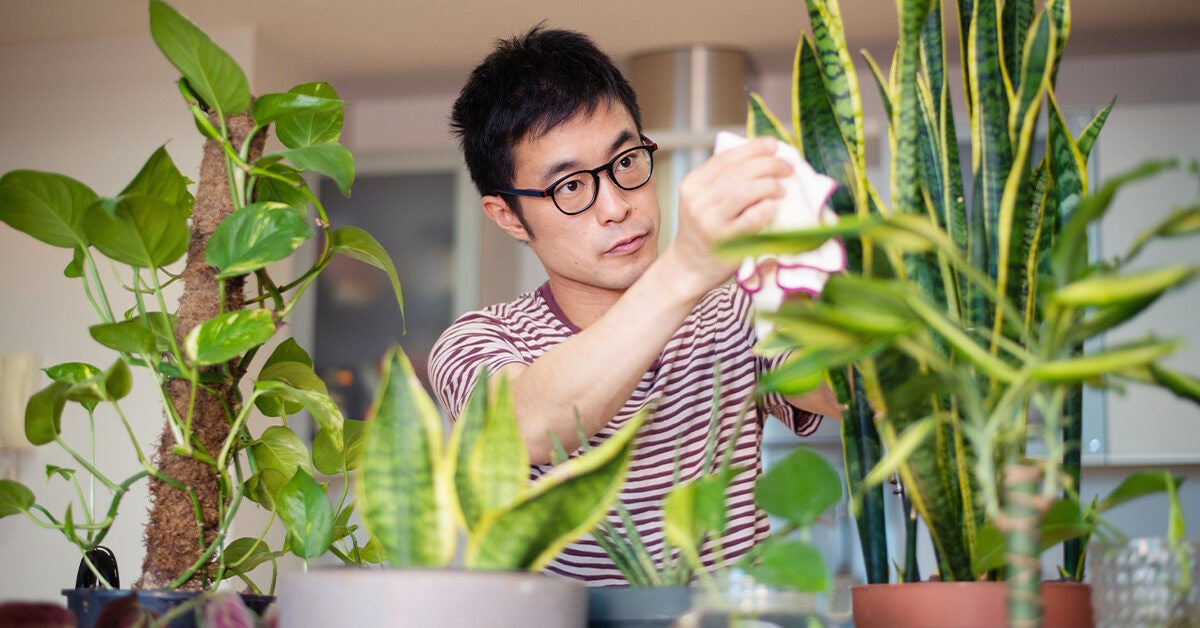The struggle is real when it comes down to getting rid of pests and diseases. With so many possible things a plant can contract, it’s much easier to work on preventative methods than worry when a problem arises. With proper management, it’s also much easier to catch a disease or pest outbreak before it happens and becomes near impossible to contain, especially before it spreads to other plants. (See my other post for 3 of the most common houseplant pests and diseases)
Diseases can only occur when the following conditions are present: a susceptible host plant, an environment that allows a disease to thrive, and a pathogen capable of causing said disease. While it’s difficult to stop a pathogen or pest from reaching your plant, you can follow four basic principles of plant management to reduce the risk and help your plants stay healthy.
1.  The most common mistake plant owners make is improper watering. Most new owners don’t realize there is such a thing as overwatering their plants, causing it to be the number one cause of plant death. Whether it’s too much water or not enough, your plant will show symptoms including yellowing leaves, small leaves, weak growth, and wilting in an attempt to communicate an issue. The key to correct watering is knowing how much the soil should dry out in between each watering. As a general rule, water when the top 1 in. of potting soil is dry; however, it’s always best to do your research to ensure the plant’s needs.
The most common mistake plant owners make is improper watering. Most new owners don’t realize there is such a thing as overwatering their plants, causing it to be the number one cause of plant death. Whether it’s too much water or not enough, your plant will show symptoms including yellowing leaves, small leaves, weak growth, and wilting in an attempt to communicate an issue. The key to correct watering is knowing how much the soil should dry out in between each watering. As a general rule, water when the top 1 in. of potting soil is dry; however, it’s always best to do your research to ensure the plant’s needs.
2.  The second method of management is simple observation. When you get a new plant, make sure it’s clean and healthy, as this reduces the risk of pests infesting your new and existing plants. A good rule of thumb for this method is to isolate the new plant from other plants for a few weeks, taking care of it and seeing if any issues arise. This prevents hypothetical breakouts. It is also essential to make sure the soil is healthy (without fungi or bugs). A helpful trick to remember when to inspect your plant is, check it before watering it. If your houseplant is flowering, make a habit of pinching off dead flowers and checking the branches and leaves of all your plants to see that they are healthy. If you notice any problems, treat them immediately.
The second method of management is simple observation. When you get a new plant, make sure it’s clean and healthy, as this reduces the risk of pests infesting your new and existing plants. A good rule of thumb for this method is to isolate the new plant from other plants for a few weeks, taking care of it and seeing if any issues arise. This prevents hypothetical breakouts. It is also essential to make sure the soil is healthy (without fungi or bugs). A helpful trick to remember when to inspect your plant is, check it before watering it. If your houseplant is flowering, make a habit of pinching off dead flowers and checking the branches and leaves of all your plants to see that they are healthy. If you notice any problems, treat them immediately.
3. /lighting-for-houseplants-1902691-04-crop-d3f5ee31ec334b5ca9c93e7ee1a8786d.jpg) The third method of management is, make sure your plant is getting the right amount of sunlight. Make sure to do your research for this information. Certain plants like aloe vera thrive in bright direct sunlight, while others, like the ZZ plant, thrive in low light conditions. Putting a plant in incorrect sun conditions can cause symptoms like spindly plants, few flowers, yellowing leaves, and can even cause the leaves to become scorched and sunburned.
The third method of management is, make sure your plant is getting the right amount of sunlight. Make sure to do your research for this information. Certain plants like aloe vera thrive in bright direct sunlight, while others, like the ZZ plant, thrive in low light conditions. Putting a plant in incorrect sun conditions can cause symptoms like spindly plants, few flowers, yellowing leaves, and can even cause the leaves to become scorched and sunburned.
4.
The fourth method of plant management is choosing a suitable container. Too small of a container will crowd the roots, causing stunted growth, and too large of a container will hold excess moisture that can cause root rot. Also, for the sake of all plants in the world, use a pot that has drainage holes in it!!
Be sure to pay attention to the symptoms your plant might be showing (click here for a table of common plant symptoms). Also, after getting a new plant, be sure to do some basic research on it to find the sunlight, water, and size requirements for healthy growth.

The struggle IS real. I love how this follows up on your previous post on pests and disease, which you linked. I personally made the mistake of overwatering a succulent, if only I had read your previous succulent guide earlier. Though now I will know these and make sure to implement the preventions. Writing was smooth and elegant as always, fantastic read with information to match.